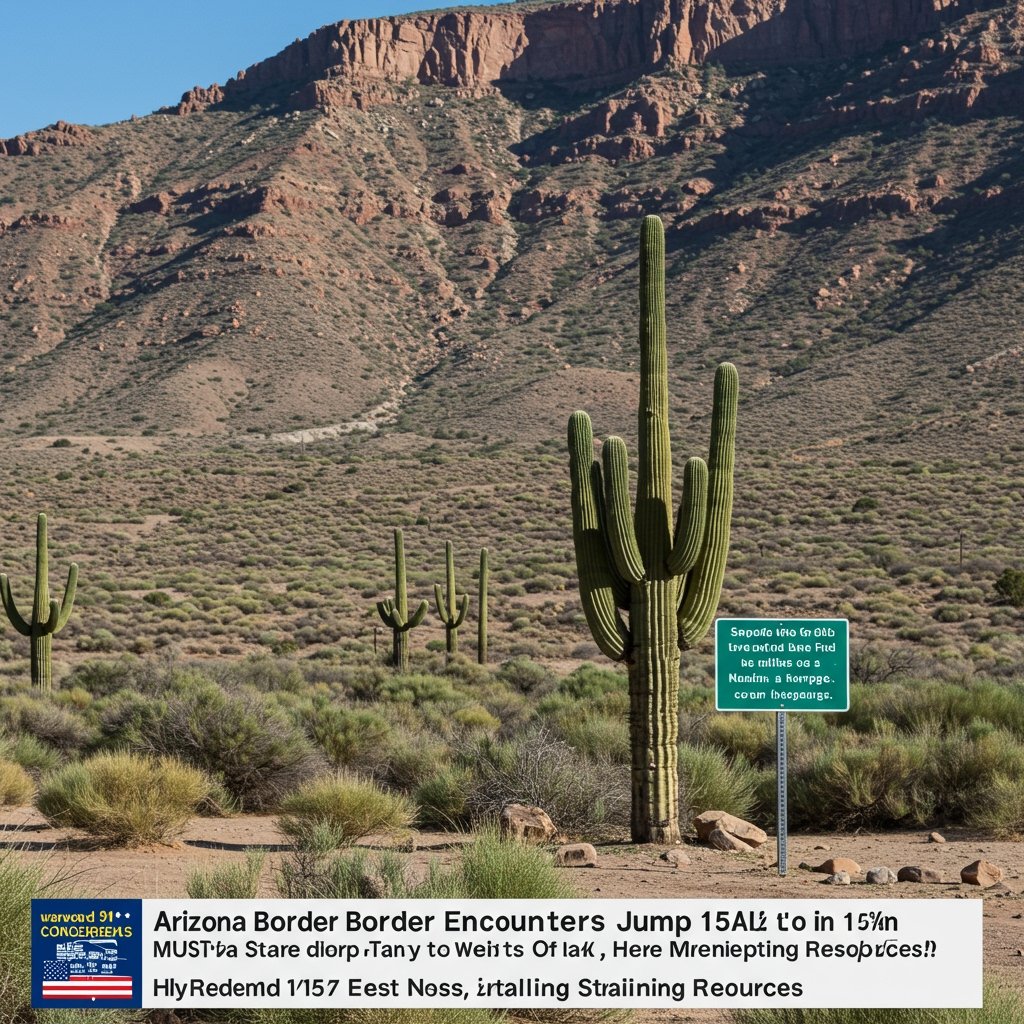U.S. Customs and Border Protection (CBP) data released on May 24, 2025, highlights a significant and concerning upward trend in migrant encounters within the Tucson, Arizona sector. The latest figures reveal that the sector recorded approximately 8,500 encounters during the single week spanning May 17 through May 23. This represents a notable 15% increase when compared to the encounter numbers recorded during the preceding seven-day period. This surge is straining resources and drawing renewed attention to the complex challenges faced along the nation’s southern border.
Detailing the Surge
The approximately 8,500 encounters reported by CBP in the Tucson sector between May 17 and May 23, 2025, represent a significant operational challenge. This figure marks a rapid 15% increase from the encounters recorded during the prior seven-day period, indicating an accelerating trend in migration flows directed towards this specific area. An \”encounter\” encompasses various actions by CBP personnel, including apprehensions between ports of entry and inadmissibility determinations at ports of entry. The Tucson sector’s expansive and rugged terrain already poses considerable challenges for effective border management. This sharp increase in activity during the specified week compounds those difficulties, demanding swift operational adjustments, including the reallocation of personnel and resources to manage the increased influx. The week-over-week comparison clearly illustrates a building pressure point along the southern border.
Factors Driving the Increase
Officials attribute the surge primarily to two interconnected factors: increased activity by smuggling organizations and shifting migration routes. Criminal smuggling networks actively work to facilitate irregular border crossings for profit, often adapting their strategies and routes in response to enforcement efforts or perceived vulnerabilities. A rise in their operations can directly contribute to increased encounter numbers. Concurrently, migration routes along the southern border are dynamic, influenced by factors such as enforcement pressure in other sectors, environmental conditions, and information spread by smugglers. A shift towards the Tucson sector suggests it has become a more active transit point during this specific period. Understanding the complex interplay between these factors is vital for federal authorities attempting to manage and deter irregular crossings, but the immediate impact is concentrated pressure on sectors experiencing these shifts.
Profile of Migrants
The demographic breakdown of those encountered during this surge provides further insight into current migration patterns. Officials report that the majority of the approximately 8,500 encounters involved single adults. Furthermore, the predominant nationalities among these individuals were from Venezuela and Ecuador. The significant presence of migrants from these two South American nations reflects broader migration trends across the hemisphere, often influenced by socio-economic and political conditions in their countries of origin. The prevalence of single adults also affects the logistical and processing requirements for border authorities, differing from the needs of families or unaccompanied minors.
Official Response and Resource Strain
The operational impact of this surge has been significant, leading to increased strain on U.S. Border Patrol resources. Border Patrol Chief Jason Owens commented on the trend, emphasizing the considerable pressure it places on agents and infrastructure. Managing approximately 8,500 encounters in a single week, representing a 15% jump, requires substantial effort in processing, transportation, and humanitarian support, diverting resources from other crucial duties. Chief Owens’ remarks also highlighted the critical need for legislative solutions to address the underlying challenges of border security and migration management effectively. His call underscores the perspective that operational efforts alone are insufficient without comprehensive changes to immigration laws and policies, including those related to asylum processing and enforcement authorities. The daily work of agents involves complex tasks beyond enforcement, all under the duress of high encounter volumes.
Broader Context and Policy Landscape
This spike in encounters in the Tucson sector occurs within a broader national discussion on border security and immigration policy. The data is released amidst ongoing debates about how to best manage the U.S. southern border, address irregular migration, and potentially reform the asylum system. The fluctuation in encounter numbers, particularly sharp increases like this 15% surge in Arizona, often informs and intensifies these policy discussions. While the specific details of the \”recent policy discussions\” mentioned in the summary are not elaborated, the timing of this surge clearly highlights the operational realities that policymakers are contending with. The sustained operational pressure, exemplified by this data from the Tucson sector, reinforces calls for comprehensive legislative and administrative approaches to secure the border and manage migration flows effectively.
Conclusion
The U.S. Customs and Border Protection data released on May 24, 2025, underscores a notable increase in migrant encounters within the Tucson, Arizona sector. The week of May 17-23 saw approximately 8,500 encounters, a 15% rise from the previous seven days. Officials attribute this surge primarily to increased activity by smuggling organizations and shifting migration routes. The majority of those encountered were single adults from Venezuela and Ecuador. As highlighted by Border Patrol Chief Jason Owens, this trend places significant strain on resources and reinforces the argument for legislative solutions. The surge in the Tucson sector serves as a critical data point in the ongoing national dialogue about border security, resource needs, and immigration policy, reflecting the complex and evolving challenges faced along the southern border.






